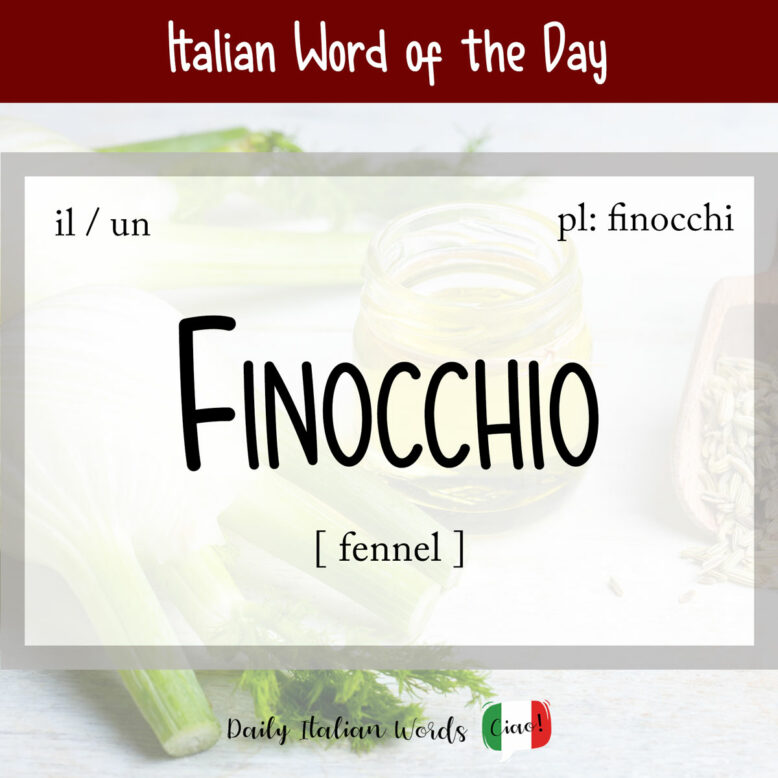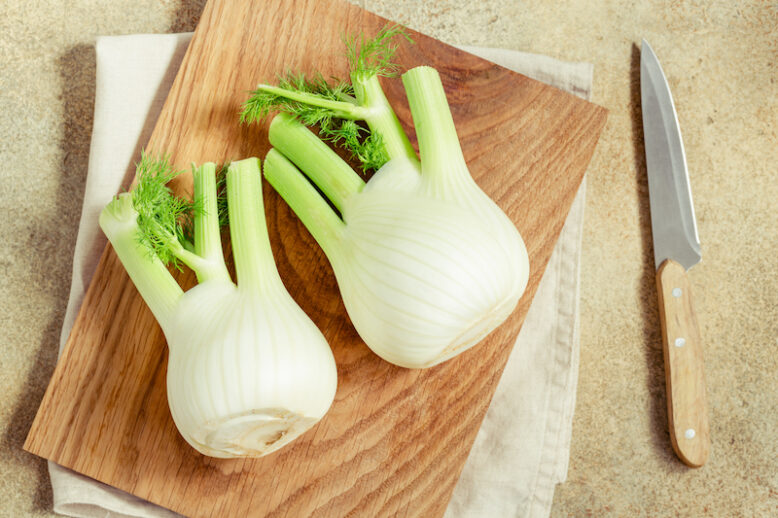Before moving to Italy, I was completely unfamiliar with the finocchio, an aromatic yellow-flowered plant of the parsley family with feathery leaves and gentle aniseed flavour. It has since become one of my favourite winter vegetables!
finocchio
fennel

Finocchio is a masculine noun, and the plural is finocchi. Here are the definite and indefinite articles it takes:
un finocchio
il finocchio
dei finocchi
i finocchi
There are many ways you can eat finocchio, but my Italian mother-in-law tends to chop the raw bulb into fine slices, and serve it as a salad garnished with walnuts, lemon, olive oil and salt. (The heart of the finocchio is particularly sweet!)
Qual è il modo migliore per tagliare i finocchi?
What is the best way to cut fennel?
Another popular side dish is finocchi gratinati (fennel gratin), which involves braising the fennel in a pan, covering it with Parmesan cheese and breadcrumbs, and browning it in the oven.

Did you know that…?
There are two types of fennel: one is round and bulbous, and the other is more slender and oval. I prefer the bulbous type for raw dishes as it is more flavourful, but both are suitable for cooking.
Fennel seeds (semi di finocchio) are also used in cooking as a spice, and like the plant itself, are known to have several health benefits.
Mi faccio una tisana ai semi di finocchio. Ne vuoi una?
I’m going to make myself a fennel seed herbal tea. Do you want one?
Like many vegetables, finocchio also has an alternative meaning: it is a vulgar slang term for a homosexual man. In ancient Italian, it was also a derogative term for a foolish man.
There are various diminutives of the word finocchio, but they are not always related to the vegetable. For example, finocchiella or finocchietto can refer to the wild fennel (mainly in the Lazio region), whereas finocchiona is a type of salami from Tuscany.
Heather Broster is a graduate with honours in linguistics from the University of Western Ontario. She is an aspiring polyglot, proficient in English and Italian, as well as Japanese, Welsh, and French to varying degrees of fluency. Originally from Toronto, Heather has resided in various countries, notably Italy for a period of six years. Her primary focus lies in the fields of language acquisition, education, and bilingual instruction.


